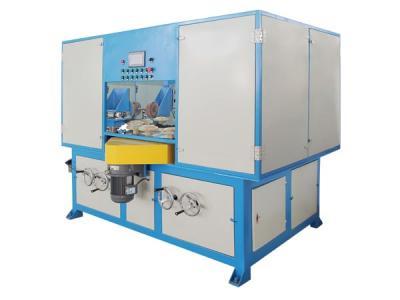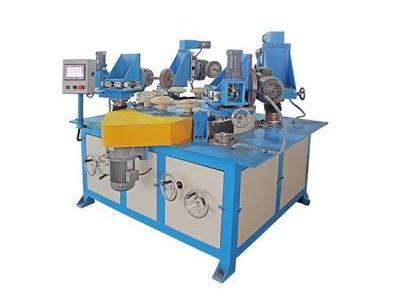Polishing machines are essential tools in various industries, from automotive and aerospace to manufacturing and metalworking. These machines ensure that surfaces are smooth, free from imperfections, and aesthetically pleasing. However, like any equipment, polishing machines require regular maintenance to operate efficiently and extend their lifespan. In this comprehensive article, we will explore the knowledge and practices necessary for the daily maintenance of polishing machines, ensuring they remain in optimal condition for prolonged use.
Proper maintenance of polishing machines is crucial for several reasons. Regular upkeep not only enhances the performance and efficiency of the machine but also prevents unexpected breakdowns, reduces repair costs, and extends the machine's lifespan. Moreover, well-maintained machines produce superior results, contributing to the overall quality of the finished product.
Before delving into the specifics of daily maintenance, it's essential to emphasize safety. Polishing machines can pose significant risks if not handled properly. Always ensure the machine is turned off and unplugged before performing any maintenance tasks. Use appropriate personal protective equipment (PPE) such as gloves, safety glasses, and dust masks to protect against dust, debris, and potential injuries.

A systematic approach to daily maintenance can help identify and address potential issues before they escalate. Here is a detailed checklist to follow:
1. Visual Inspection
Begin with a thorough visual inspection of the machine. Look for signs of wear and tear, damage, or loose components. Pay close attention to the following areas:
Belts and Drive Components: Check for fraying, cracking, or any signs of deterioration. Ensure belts are properly tensioned.
Wheels and Pads: Inspect polishing wheels and pads for excessive wear, contamination, or damage.
Cords and Connections: Ensure power cords and connections are intact and free from cuts or abrasions.
2. Cleaning
Regular cleaning is vital to maintain the efficiency of the polishing machine. Dust, debris, and residue can accumulate and affect performance.
Exterior Cleaning: Wipe down the machine's exterior with a clean, dry cloth to remove dust and debris.
Air Vents and Filters: Clean air vents and filters to prevent overheating and ensure proper ventilation. Use compressed air to blow out any accumulated dust.
3. Lubrication
Proper lubrication of moving parts reduces friction, wear, and tear, ensuring smooth operation.
Bearings and Joints: Apply the recommended lubricant to bearings, joints, and other moving parts. Follow the manufacturer’s guidelines for the type and amount of lubricant.
Lubrication Points: Refer to the machine's manual to identify all lubrication points and ensure they are adequately maintained.
4. Checking Electrical Components
Electrical components play a crucial role in the operation of polishing machines. Regular checks can prevent electrical failures.
Power Supply: Ensure the power supply is stable and within the recommended voltage range.
Switches and Controls: Test all switches, buttons, and control panels for proper functionality.
Grounding: Verify that the machine is correctly grounded to prevent electrical shocks.
5. Assessing Polishing Media
The quality of the polishing media directly impacts the machine's performance and the finish of the workpiece.
Polishing Wheels and Pads: Check for wear and replace if necessary. Ensure they are correctly mounted and balanced.
Abrasives and Compounds: Monitor the condition of abrasives and polishing compounds. Replace or replenish as required.

Despite regular maintenance, polishing machines may encounter occasional issues. Understanding common problems and their solutions can help minimize downtime.
Overheating can result from clogged air vents, inadequate lubrication, or excessive load. Ensure proper ventilation, clean air filters, and apply sufficient lubricant to moving parts.
Unusual noises often indicate worn or loose components. Inspect belts, bearings, and joints for wear or damage and tighten or replace as necessary.
If the machine is not polishing effectively, check the condition of the polishing media, abrasives, and compounds. Ensure they are suitable for the material being polished and replace them if necessary.
Intermittent power loss or malfunctioning controls may be due to loose connections or faulty components. Inspect and secure all electrical connections, and replace any damaged parts.
In addition to daily maintenance, adopting best practices can further enhance the longevity and performance of polishing machines.
Ensure operators are well-trained in the proper use and maintenance of the machine. Regular training sessions can keep them updated on the latest techniques and safety protocols.
Implement a scheduled maintenance program that includes weekly, monthly, and annual checks. This proactive approach can identify potential issues before they become major problems.
Always follow the manufacturer’s guidelines for maintenance, lubrication, and replacement of parts. Using recommended products and adhering to specified procedures can prevent voiding the warranty and ensure optimal performance.
Maintain detailed records of all maintenance activities, including dates, tasks performed, and parts replaced. This documentation can help track the machine’s condition and plan future maintenance activities.
Daily maintenance of polishing machines is essential for ensuring their efficient operation, extending their lifespan, and maintaining the quality of the finished products. By following a systematic approach to inspection, cleaning, lubrication, and troubleshooting, operators can prevent common issues and keep their machines in top condition. Adopting best practices and adhering to manufacturer guidelines further enhances the benefits of regular maintenance. Investing time and effort in daily maintenance not only improves productivity but also ensures a safe and reliable working environment.
By continuing to use the site you agree to our privacy policy Terms and Conditions.